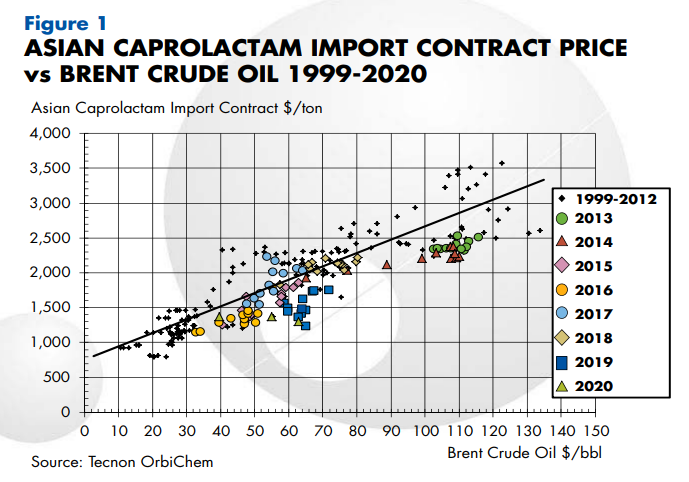1 min read
Cheap Crude Oil Helps Some Chemicals More Than Others
 Charles Fryer
:
Mar 25, 2020 12:00:00 AM
Charles Fryer
:
Mar 25, 2020 12:00:00 AM

In the space of 11 weeks we have seen Brent crude oil prices fall from just under $70/bbl to $29/bbl. Lower crude oil prices are generally welcomed by the chemical industry, as not only feedstock costs but usually also energy costs are reduced. But a complicating factor is that the market balance between competitive products may become disturbed. For example, production costs of HDPE fall more rapidly than those of PVC as crude oil prices decline, since chlorine costs are little affected. In this article we compare the expected market response of two competitive synthetic fibres to the recent fall in crude oil prices.
Over the past 20 years crude oil prices have swung from a minimum of $10/bbl to a maximum of $135/bbl. Chemicals with a high dependence on hydrocarbon feedstocks and having a high energy content have prices that tend to vary linearly with the crude oil price. An example is shown in Figure 1, which compares caprolactam prices with crude oil month by month over the past 21 years.

The relationship is reasonably linear, but there are some strong deviations. These can be explained as the effect of surpluses or deficits that occur from time to time. For example, caprolactam prices in 2011, when markets were very tight, lie above the best-fit line (the black dots above $3000/ ton). Conversely prices in 2013 and 2019, when markets were oversupplied, have points well below the line. In a methodology developed by Tecnon OrbiChem, explained elsewhere, the deviations are correlated with a Tightness Index, with such correlations then used for price forecasting. In this article we examine how prices of caprolactam, the raw material for poylamide 6 fibres, compare with prices of the raw materials to make polyester fibre, namely PTA and MEG, according to the prevailing crude oil price.




